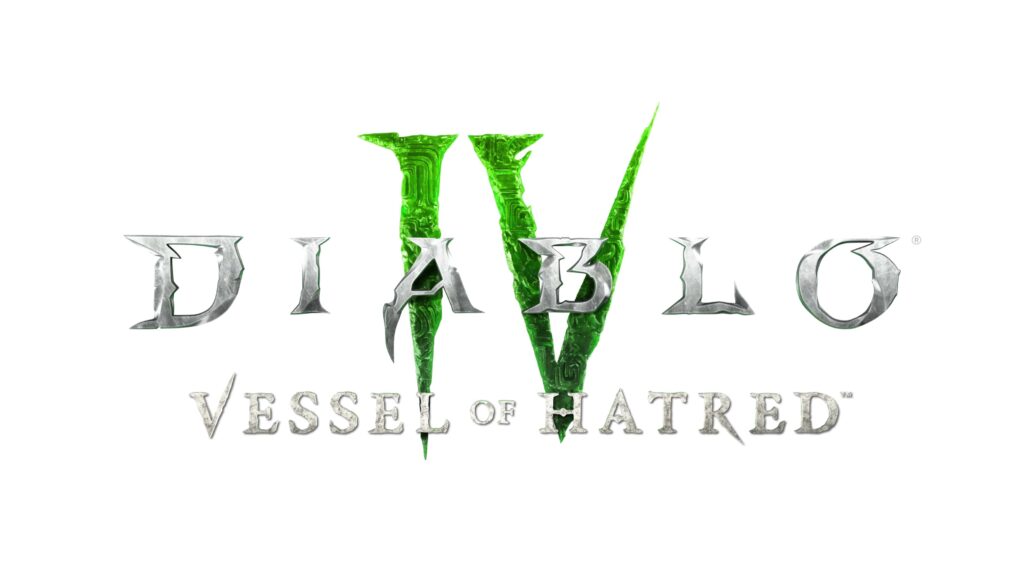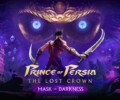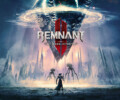Creating Nahantu – the Art & Story of Vessel of Hatred
Blizzard’s Eleni Rivera-Colon (Associate Narrative Designer) and Chris Ryder (Environment Art Director) delve into the dangerous jungles of Nahantu. Explore the inspiration behind this captivating new region, from its picturesque landscapes to its haunting mysteries, and discover what awaits players brave enough to venture into its depths.
In the ever-evolving world of Diablo IV, a new danger stirs in the untamed wilds of Sanctuary. South of Kehjistan, where the land gives way to the sprawling jungles of Estuar, lies Nahantu. More than just a location, Nahantu is a test, a crucible of primal power and chilling beauty. It is here, amongst the chilling atmosphere of Nahantu, that Neyerelle makes her move, taking Mephisto’s Soulstone after the events of the main campaign and setting the stage for Diablo IV: Vessel of Hatred.
This is no ordinary region ripe for exploration. Nahantu’s landscapes conceal deadly secrets, and its exotic beauty is a siren song for those unprepared for its challenges. Ancient roots span vast chasms, while unseen predators lurk amidst the dazzling colors of deadly yet beautiful creatures.
What inspired this paradise, twisting its life into such vivid forms? Associate Narrative Designer, Eleni Rivera-Colon and Environment Art Director, Chris Ryder, shed light on the creation of Nahantu, revealing the inspiration behind Diablo IV’s most captivating and perilous region yet.
Q: Diablo IV’s art style has been praised for its dark and gritty roots. Can you tell us how you continue to balance the dark fantasy art style with the new region with visuals that feel fresh and new?
Ryder: “The dark atmosphere is essential to Diablo IV’s identity, and with this new region, we saw an opportunity to expand on that familiar tone. We envisioned a fresh take on the classic aesthetic, exploring what a truly dark and immersive jungle could be. While still retaining its strength, the result is a revitalized tone that brings a new depth and richness to the world. This environment is larger than life, drawing players into its intricate details and haunting beauty.”
Rivera-Colon: “In terms of the narrative, we embraced the duality of the jungle, exploring its inherent beauty alongside its potential for darkness. We wanted to showcase the depth and richness Chris described, crafting a story that reflects the contrasting nature of this environment. Players can expect moments of breathtaking wonder combined with crazy encounters, creating a truly immersive and unforgettable experience.”
Q: How does the corruption of Mephisto affect the lush jungles of Nahantu?
Rivera-Colon: “Corruption has cast a shadow over everything here. This place was hidden away, untouched for centuries. They had this beautiful culture and their own unique way of life. But then Mephisto’s corruption spread, seeping into their world. The corruption’s twisting the region at its core .”
Ryder: “You can see the corruption spreading throughout Nahantu. Parts of the jungle are still beautiful and untouched. But you can see the transformation taking place in Nahantu; it’s taking over. We wanted that contrast to show how important it is to save what was once a unique environment.”
Q: When creating a new region like Nahantu, how much does the story guide the art, or does art influence the story mostly?
Rivera-Colon: “I see it as the two coexisting. Neither art nor narrative dictates the other; it’s a true collaboration. Sometimes, the art team inspires us with a visually stunning concept, and we weave a compelling narrative around it. It’s a back-and-forth, a synergy that brings the world to life.”
Ryder: “We often start with a spark, an idea that’s not fully formed. We might not have all the assets or a complete picture, but we begin to explore, to experiment. As we collaborate, the idea takes on a life of its own, evolving organically. The initial inspiration acts as a guiding force, pushing us towards a conclusion.”
“It’s amazing to witness this transformation, even with all the feedback and adjustments along the way. It’s a testament to the immense talent of our team. Everyone brings their unique perspective and expertise, and the result is something special, something distinctly Diablo IV. That’s why we love what we do – it’s this collaborative spirit that allows us to create something truly unique and memorable.”
Q: Tell us about what inspired the look and the feel of the Spiritborn, such as the spirit guardians, the tattoos on the Spiritborn and also the gear?
Ryder: “We wanted Nahantu to feel wild and naturalistic, in tune with animals and the environment. It’s not a place of technology. To match that, the Spiritborn needed to feel powerful, like they draw strength from nature itself. So everything about them, from their look to their gear, breathes that ethos. We want players to see them and feel that connection to the wild power of Nahantu.”
Rivera-Colon: “Narratively, we aimed for this ‘larger-than-life’ fantasy with the Spiritborn. For inspiration, we looked at familiar tropes and archetypes and then explored how to give them a fresh perspective. We wanted to break away from previous classes in Diablo. A key difference with the Spiritborn is that their power comes from an external source, not from within, which creates a unique dynamic for players.”
Q: What makes Nahantu pivotal to the story you’re telling in Vessel of Hatred?
Ryder: “It’s a mysterious place, one we haven’t explored in a long time. You’re following Neyrelle, who has her own reasons for being there. It’s about rediscovering this lost region and uncovering its secrets. We take players to some incredible locations, visually stunning; through them, we tell a story of adventure and mystery to find out what’s going on with Neyrelle.“
Rivera-Colon: “Thematically, this part of the narrative is about confronting the past, both for the characters and for the players. We all have things we’d rather not face, traumas we carry with us. This is about confronting those things head-on while also facing a new breed of challenges.”
Q: How did you go about ensuring that the game’s soundtrack complements the visual direction, especially as we head into Vessel of Hatred? Were there any specific inspirations or challenges in blending these two elements?
Ryder: “Our sound design team is world-class. They’ve won so many awards, and for good reason; what they bring to the game is unbelievable! They add so much depth and emotion. They’re the unsung heroes who just elevate the game massively.”
Rivera-Colon: “I actually listen to the Diablo soundtracks on Spotify while I work! The composers have done an amazing job of weaving in familiar themes from previous games, paying respect to the world we know and love. But there are also fresh, new pieces that perfectly capture the atmosphere of Nahantu. It’s a region we haven’t explored in a long time, and the music really immerses you in this new environment.”
Q: Can you discuss the design process behind the creation of Nahantu?
Rivera-Colon: “For the story, we build on what’s already there in Diablo’s lore. The art team does the same, but they also get to invent cool new stuff. We look at old games, books, and basically everything to find ways to make it fresh and exciting visually. We’re inspired by real things, but we always give it that Diablo twist. It’s still dark and gothic, even in a jungle.”
Q: Are there any specific elements of the art and the story of VoH that haven’t been discussed at length yet but particularly excite you as artists and storytellers? Maybe a specific story moment or a specific area on the map?
Rivera-Colon: “I spent a lot of time on world-building, fleshing out the towns and strongholds, and really making them come alive. Players can discover tons of fun Easter eggs and hidden moments that deepen their immersion in the world. These little details enhance the overall experience. We designed the side quests to enrich the main storyline. They might take you on a detour, but you’ll return to the campaign with a greater understanding of the world and its inhabitants. It’s all about creating a cohesive experience where the side content enhances rather than distracts from the main narrative. I had a blast collaborating with the other narrative designers to make this happen.”
Ryder: “When creating a region like Nahantu, we brainstorm a ton of ideas, but we also accept that not everything makes it into the final game. But I love the feeling of scale we captured, especially with those giant structures. They make you wonder: what were they? What happened here? We have those little mysteries all over the world. Not everything needs an explanation; it’s more fun to discover them as you explore.”
To learn more about Diablo IV: Vessel of Hatred, check out the Diablo IV: Vessel of Hatred website, or for real-time updates, follow the official X.
X
See you in Nahantu.






No Comments